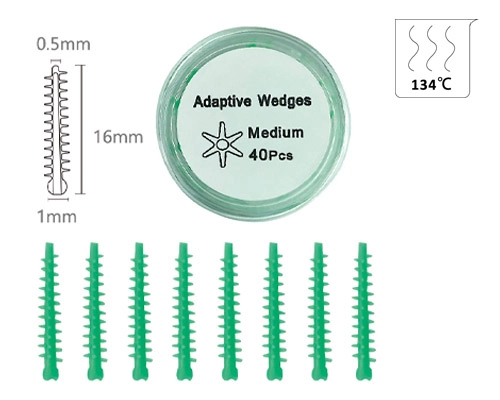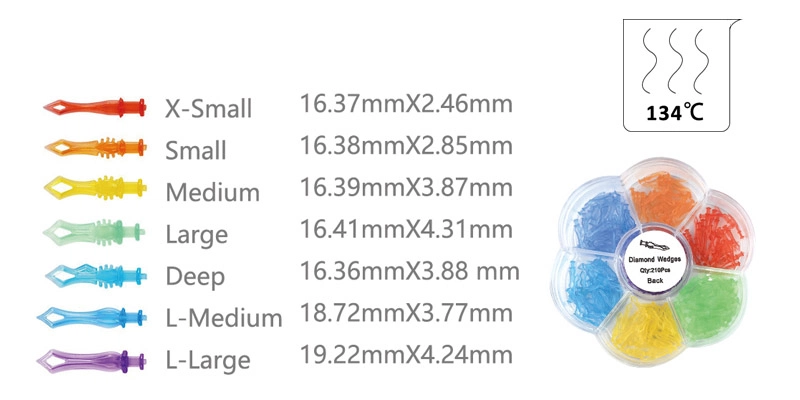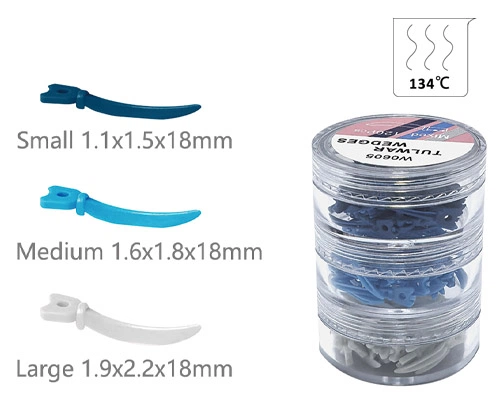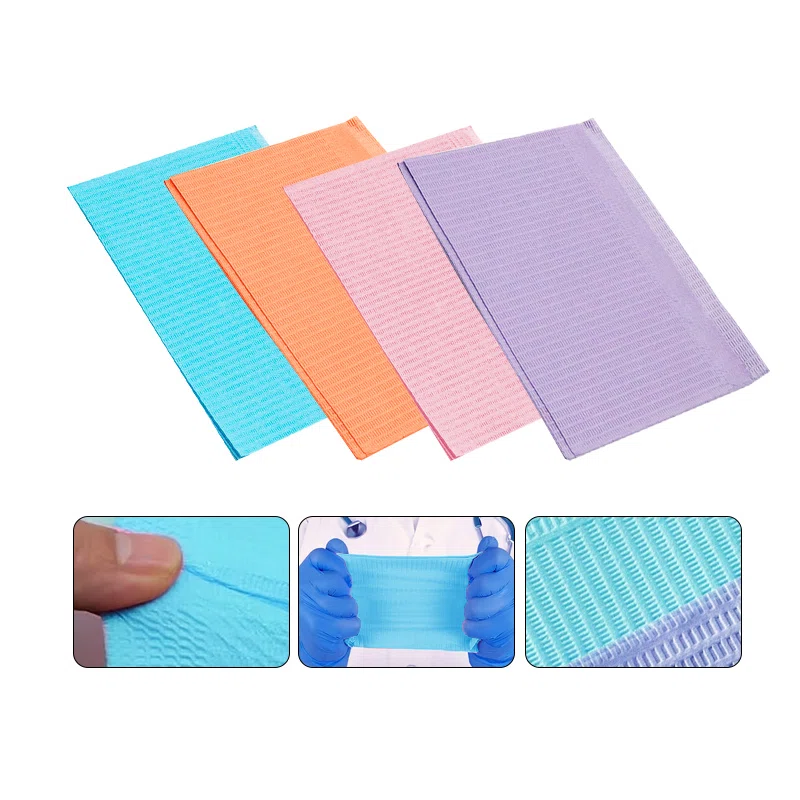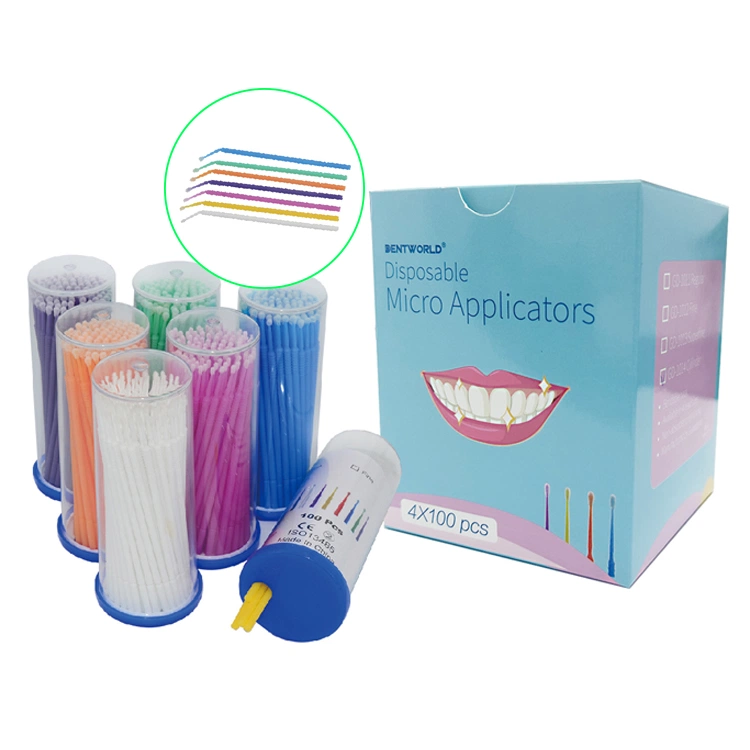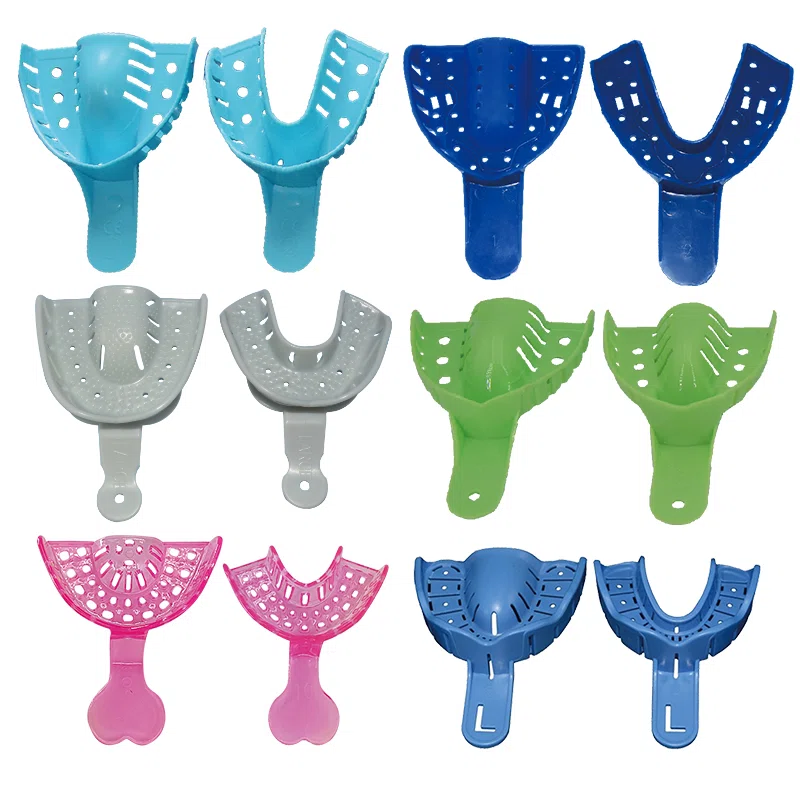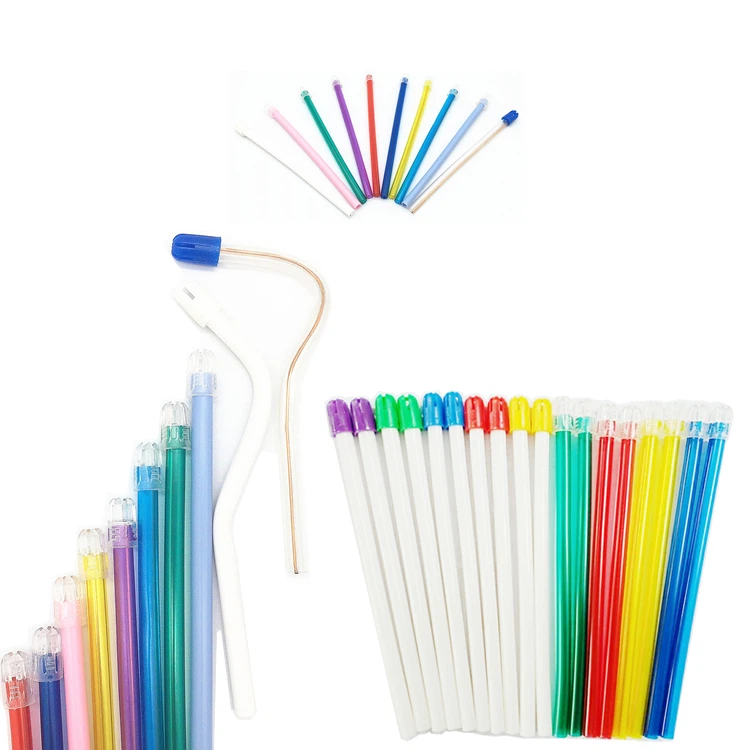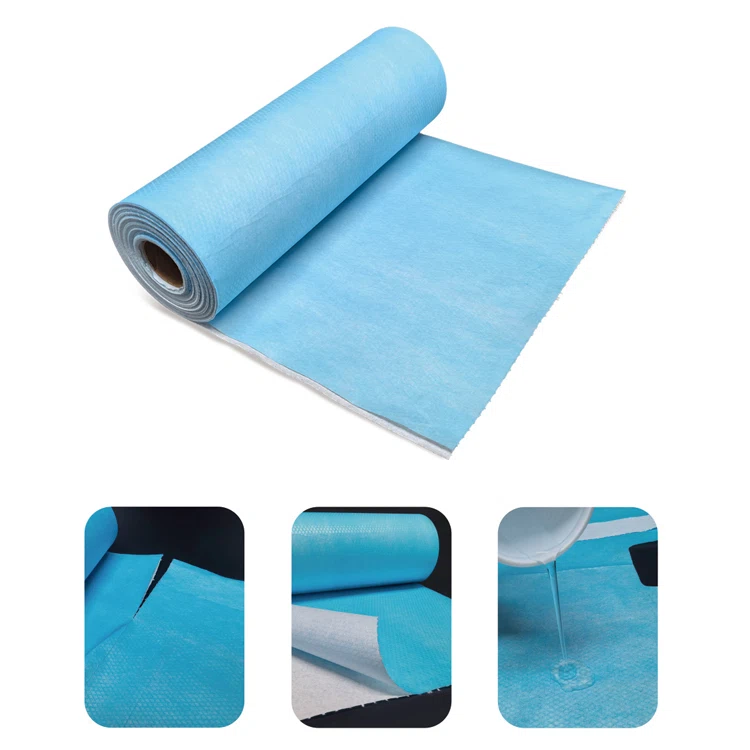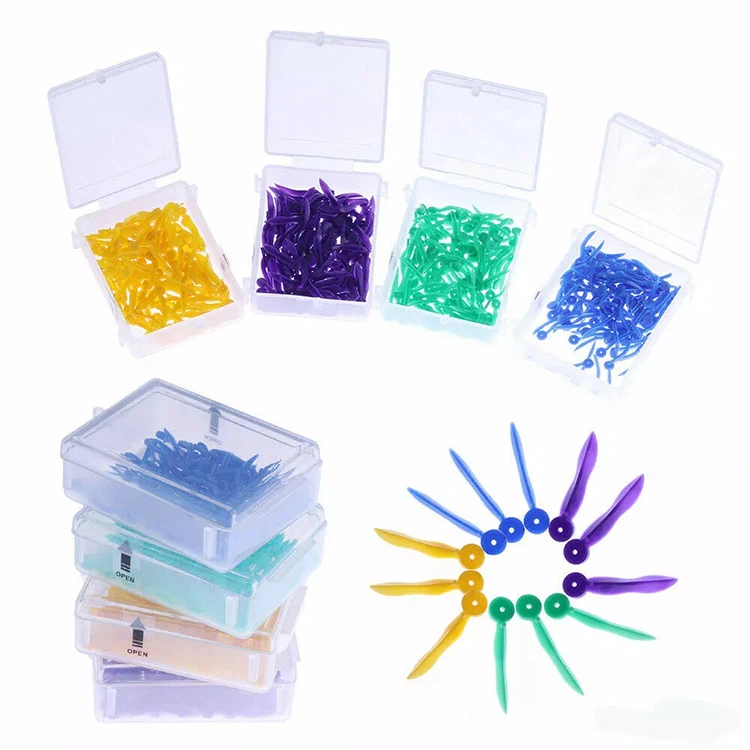
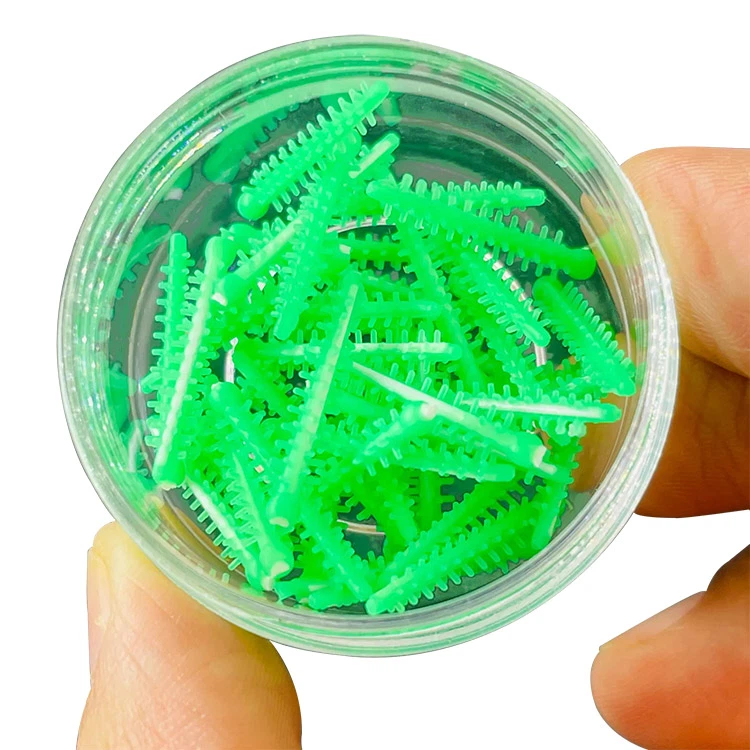
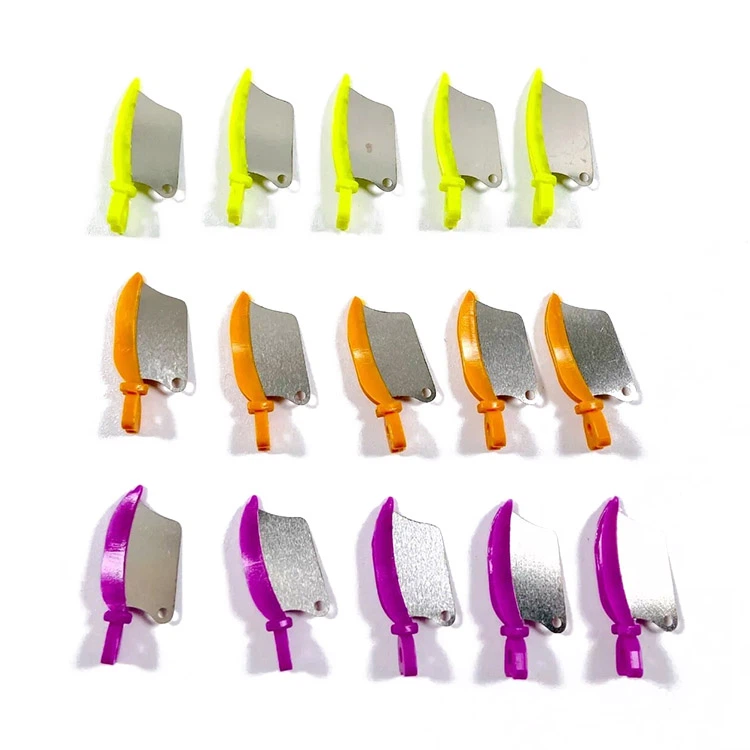
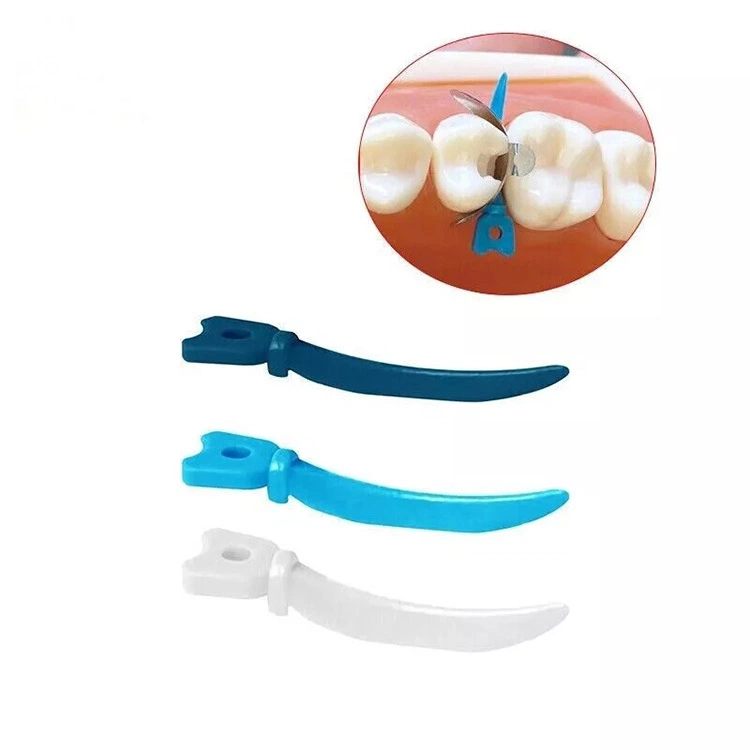
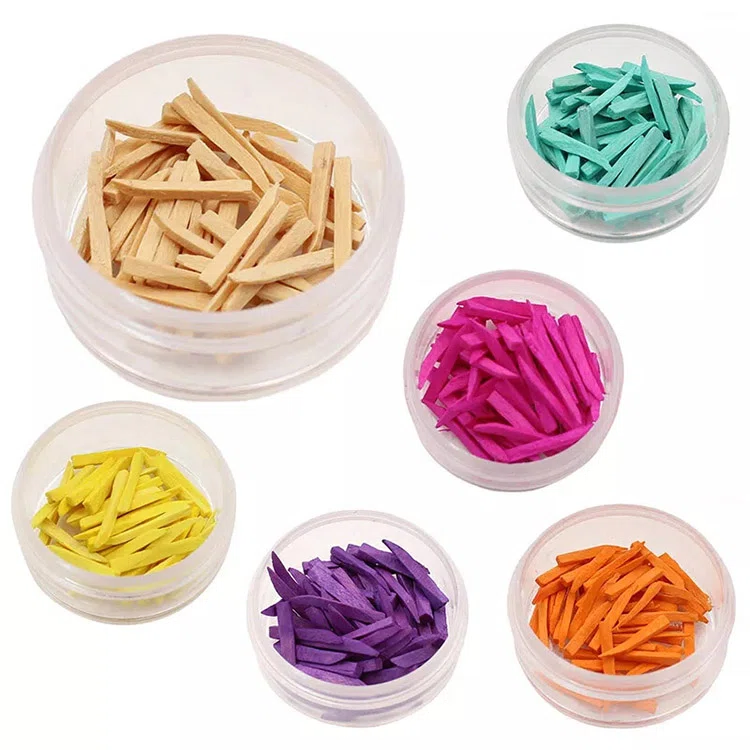
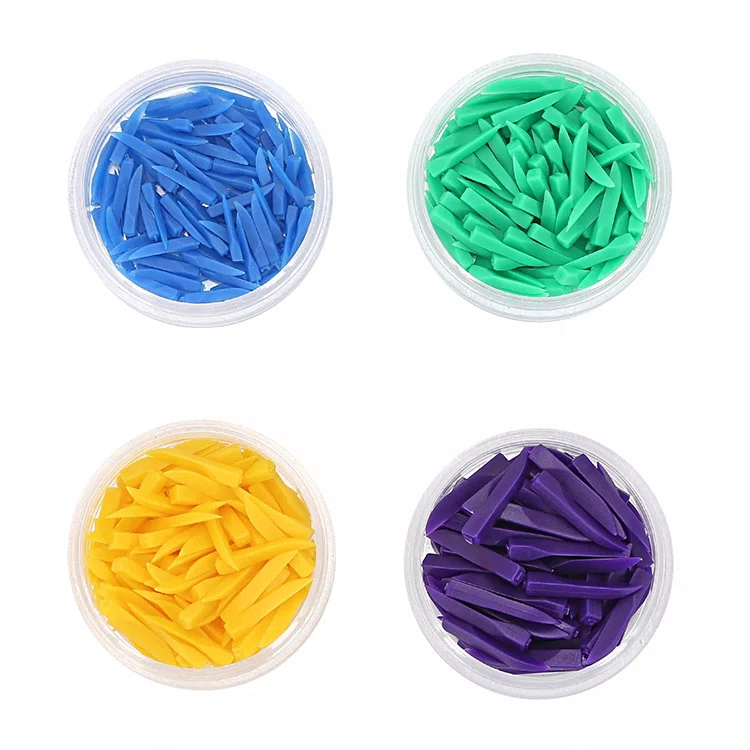
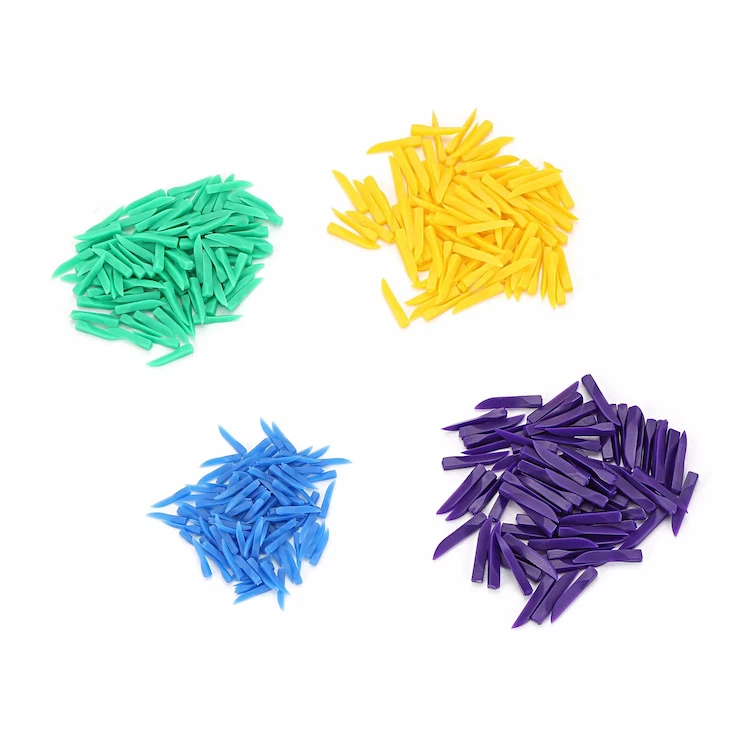
Fuas dentárias
- Material de alta qualidade: Feito de plástico médico, garantir a segurança e impedir a poluição com uso descartável
- Dimensionamento versátil: Projetado com tamanhos diferentes - acomoda vários espaços interdentais
- Ajuste perfeito: Essas cunhas são projetadas para se encaixar perfeitamente entre os dentes, Ajudando em procedimentos precisos de restauração e preenchimento
Fuas dentárias geralmente são feitas de madeira, plástico, e borracha e são usados principalmente em tratamentos odontológicos para preencher as lacunas entre os dentes e impedir que o material seja derramado durante o tratamento. Durante a recuperação dentária, As cunhas dentárias ajudam a formar novos pontos de contato e manter uma posição normal de mordida. As cunhas dentárias também estabilizam a estrutura dentária, impedindo a mudança da posição durante o tratamento odontológico.
Em odontologia clínica, As cunhas dentárias servem funções terapêuticas duplas. Durante os procedimentos de restauração dentária, Eles facilitam a adaptação da banda da matriz para garantir um contato próximo proximal e impedir a excesso de material em colocações de resina composta. O mecanismo de cunhagem cria separação interproximal adequada para reprodução anatômica precisa enquanto controla a morfologia da margem gengival.
Ortodonticamente, As cunhas dentárias são empregadas como ferramentas adjuvantes para movimento de dente controlado. Aplicando pressão interradicular calibrada, Os médicos podem obter ajustes espaciais no nível de mícrons durante as fases de alinhamento ou estabilizar o reposicionamento alcançado durante os protocolos de retenção.
Categoria de cunhas dentárias
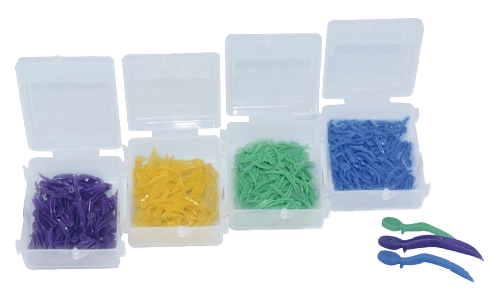
- Nova co-cobertura de plástico
- Stern redonda com um buraco
- Facilmente de ser tomado,borda redonda com não atingido,Torne as cunhas mais flexibilidade para estar cheio de rachaduras de dentes diferentes
ou 100 PCs/caixa,550 Caixas/CTN
| Tamanho | Cor | Comprimento |
|---|---|---|
| Ss | azul | 17.8*1.7 mm |
| S | verde | 17.8*2.1 mm |
| M | amarelo | 17.8*2.45 mm |
| L | roxo | 17.8*2.8 mm |

| Tamanho | Cor | Comprimento | Tamanho | Cor | Comprimento |
|---|---|---|---|---|---|
| Ss | azul | 10*1.8*1.6 mm | S | verde | 12*2*1.8 mm |
| M | amarelo | 14*2.2*2 mm | L | roxo | 16*2.6*2.4 mm |

| Cor | Comprimento | Cor | Comprimento | Cor | Comprimento |
|---|---|---|---|---|---|
| laranja | 1.2*1.5*12 mm | roxo | 2*2*15 mm | verde | 1.5*2*14 mm |
| amarelo | 1.3*2*16 mm | rosa | 1.5*2*16 mm | branco | 1.3*1.5*14 mm |
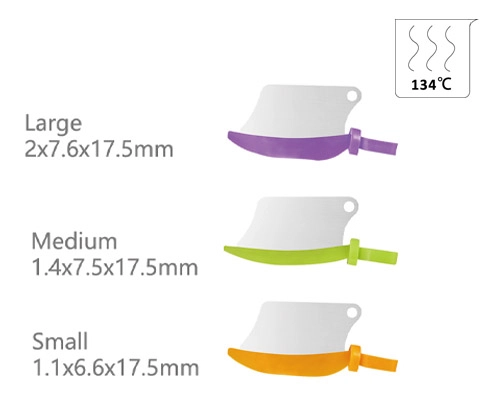
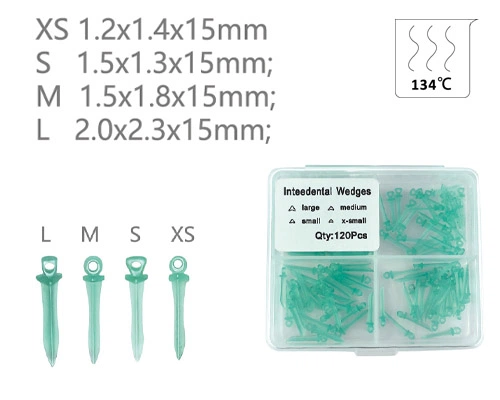
As cunhas dentárias desempenham um papel muito crítico na terapia dental moderna e são ferramentas insubstituíveis para restaurar os dentes, Ortodontia, e outras disciplinas. Escolha as cunhas odontológicas apropriadas aumentarão a eficácia do tratamento e reduzirão os pacientes’ desconforto.
Mais detalhes, Entre em contato conosco.
Fuas dentárias: O "Pequenos Assistentes" para restauração dentária
Cunhas de lacuna dentária (também conhecido como cunhas dentárias) são ferramentas importantes utilizadas no tratamento oral para isolar os dentes e proteger as gengivas. Geralmente é feito de madeira ou plástico. Apesar de seu pequeno tamanho, desempenha um papel significativo em tratamentos como obturações dentárias e restaurações de facetas, especialmente em operações como resina composta, cimento de íon de vidro e obturações de amálgama de prata. Inserindo uma cunha no espaço interdental, o espaço entre os dentes pode ser efetivamente controlado, as gengivas podem ser protegidas, e a forma da restauração pode ser ajustada, aumentando assim a taxa de sucesso e a estabilidade do tratamento.
A função das cunhas dentárias
- Isole as superfícies adjacentes dos dentes
Ao obturar um dente ou restaurar uma cárie na superfície adjacente, uma cunha dentária é inserida entre os dentes para separar a gengiva e fixar as Bandas Matrizes, impedindo que o material restaurador adira ao dente ou gengiva adjacente. - Proteja os tecidos periodontais
Apertando levemente as gengivas, o dano aos tecidos moles causado por instrumentos cirúrgicos é reduzido, e o risco de sangramento gengival pós-operatório é reduzido. - Modelagem auxiliar
Certifique-se de que o material restaurador adere perfeitamente às superfícies adjacentes do dente para evitar complicações como saliências ou impactação de alimentos após a restauração.
Classificação das cunhas dentárias
Cunha dentária de madeira
Feito de materiais de madeira macia, como choupo e bétula, tem as vantagens de baixo custo e fácil poda. O tamanho pode ser ajustado de acordo com as lacunas entre os dentes, e a madeira tem boa elasticidade natural, o que pode reduzir danos aos tecidos periodontais dos dentes adjacentes. No entanto, as desvantagens das cunhas dentárias de madeira são que elas têm forte absorção de água, são propensos a expansão e deformação, e têm resistência relativamente baixa. Deve-se ter cuidado ao usá-los.
Cunha dentária de plástico
Geralmente é feito de materiais como polietileno, polipropileno ou náilon e é amplamente utilizado na odontologia moderna. De acordo com diferentes durezas, pode ser classificado como:
- Cunhas dentárias de plástico rígido: Alta resistência e formato estável, adequado para situações com grandes lacunas ou pouca soltura dos dentes adjacentes.
- Cunhas dentárias de plástico elástico: Eles têm um certo grau de elasticidade, pode se adaptar a espaços irregulares, reduzir a pressão nas gengivas, e são adequados para pacientes com gengivas sensíveis ou espaços estreitos.
As vantagens comuns das cunhas dentárias de plástico são que elas são à prova d'água, Não é fácil quebrar, tem uma superfície lisa, e reduzir a adesão ao material de restauração. Dependendo de suas formas, cunhas dentárias de plástico vêm em vários tipos, como em forma de espada, em forma de faca, e tipos auto-adaptáveis. O tipo apropriado pode ser selecionado com base nas condições das superfícies adjacentes dos dentes.
Seleção de materiais para cunhas dentárias
Requisitos básicos de propriedade de material:
- Biocompatibilidade: O material não deve ter reação irritante com a mucosa oral, gengivas e tecidos dentais, evitando reações alérgicas ou inflamação, especialmente em áreas que estão em contato prolongado com as gengivas. Deve atender às normas de biossegurança odontológica (como ISO 10993).
- Propriedades mecânicas: Deve ter resistência e tenacidade suficientes para suportar a pressão durante a operação sem quebrar facilmente. Ao mesmo tempo, deve ser capaz de se adaptar a diferentes formatos de lacunas para evitar rigidez excessiva que cause danos aos dentes ou tecidos periodontais.
- Estabilidade física: O material não deve absorver água, deformar ou dissolver no ambiente úmido da boca, evitando alterações morfológicas causadas pela saliva e afetando o efeito de restauração. Os materiais metálicos devem ter resistência à corrosão, e materiais plásticos devem ter resistência ao envelhecimento.
- Conveniência operacional: O material deve ser fácil de cortar, moldar ou desinfetar, com uma superfície lisa que reduz a adesão ao material de reparo, facilitando a remoção pós-operatória sem deixar detritos.
Selecione diferentes cunhas dentárias com base nos materiais de restauração
- Enchimento de resina composta: Selecione cunhas dentárias de plástico com superfícies lisas que não sejam propensas a aderir para evitar que a resina adira às cunhas e afete a estanqueidade das bordas da restauração.
- Enchimento de amálgama de prata: Cunhas dentárias de madeira ou cunhas dentárias de plástico rígido podem ser selecionadas. Devido ao pequeno encolhimento de volume do amálgama de prata durante a cura, o requisito de estabilidade para cunhas dentárias é relativamente baixo.
- Enchimento de cimento de íon de vidro: Escolha cunhas de plástico não absorventes para evitar a expansão das cunhas de madeira devido à absorção de água, o que pode afetar o efeito de cura do cimento.
Aplicação clínica de cunhas dentárias
Passos para colocar cunhas dentárias
- Posicionando a lacuna: Use uma pinça para segurar a cunha dentária, alinhe sua ponta com a lacuna entre o dente afetado e o dente adjacente, e certifique-se de que o longo eixo da cunha dentária esteja paralelo ao longo eixo do dente para evitar inclinação.
- Incorporação progressiva: Empurre suavemente na abertura com os dedos ou com um clipe de cunha dentária, aplicar força gradualmente para evitar força repentina que pode causar danos às gengivas ou deslocamento dos dentes adjacentes, até que a parte inferior da cunha dentária esteja nivelada ou ligeiramente abaixo da superfície oclusal.
- Exame de posição: Use uma sonda dentária para verificar a posição da cunha dentária para confirmar se as gengivas estão comprimidas e recuadas, se a lacuna interproximal está totalmente exposta, e se a cunha dentária está estável.
Cooperação intraoperatória e remoção pós-operatória:
- Cooperação intraoperatória: Ao preencher o material restaurador, verifique regularmente a posição da cunha dentária para evitar o deslocamento da cunha dentária causado pela pressão de enchimento do material. Se for usada resina composta curável por UV, certifique-se de que a cunha dentária não bloqueie a área iluminada para evitar afetar o efeito de cura.
- Remoção pós-operatória: Depois que o material de restauração solidificou, use uma pinça para segurar suavemente a parte inferior da cunha dentária e remova-a lentamente ao longo da direção de inserção para evitar puxar, o que pode causar danos à restauração ou à gengiva. Após a remoção, a forma das superfícies adjacentes da restauração, o ajuste marginal e a condição gengival devem ser examinados.
Precauções ao usar cunhas dentárias
- Combine o formato dos espaços entre os dentes
O tamanho da cunha deve ser apropriado. Se for muito grande, pode causar pressão nas gengivas. Se for muito pequeno, não pode manter as bandas da matriz no lugar. Selecione a cunha apropriada com base na forma tridimensional dos espaços entre os dentes. - Evite operação violenta
Ao inserir, aplique pressão lentamente para evitar que a cunha se quebre ou cause danos às gengivas. - Pacientes especiais devem usar com cautela
Para pacientes com recessão gengival grave ou grandes espaços entre os dentes, recomenda-se usá-lo em combinação com outros instrumentos (como moldar braçadeiras).
Perguntas frequentes
Cunhas dentárias são ferramentas auxiliares, geralmente feito de madeira ou plástico, usado para fixar as bandas de matriz de superfície adjacentes durante tratamentos restauradores.
- Estabilizando Bandas Matrizes: Evita o transbordamento de material durante o preenchimento com resina.
- Proteja as gengivas: Pressione as gengivas para contrair e reduzir os danos aos tecidos moles causados pelas operações com instrumentos.
- Manter o relacionamento de adjacência: Certifique-se de que o ponto de contato entre a restauração e o dente adjacente tenha um formato natural.
Por material: cunhas de plástico (descartável), Custas de madeira (absorção de água e inchaço).
De acordo com o projeto: cunhas retas, cunhas em forma de arco (adaptado à curvatura anatômica dos dentes).
Por tamanho: Disponível em várias especificações, como XS, S, M, e eu, para acomodar diferentes larguras de espaço entre os dentes.
- Danos nas gengivas: A operação inadequada pode causar abrasões ou úlceras nas mucosas.
- Defeito da restauração: A posição inadequada da cunha pode causar má adjacência ou suspensão do corpo de enchimento.

